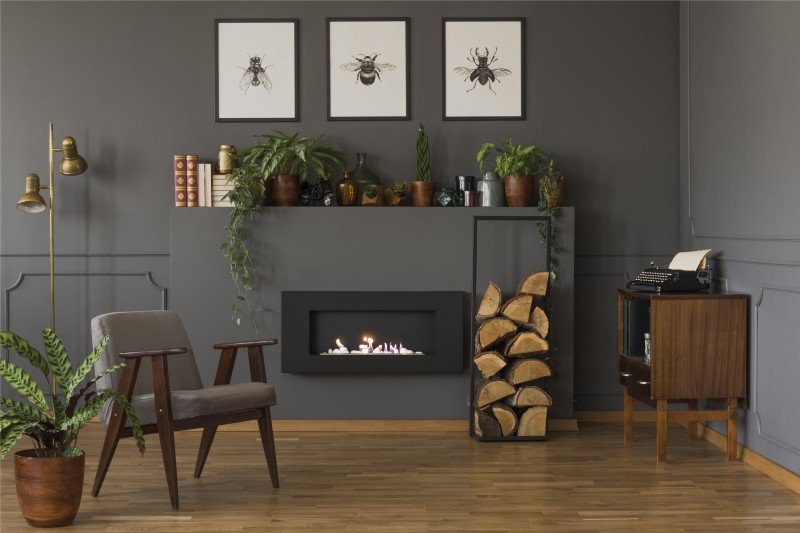The Fireplace: A Warm Embrace of Tradition and Comfort
Fireplaces have been an integral part of human habitation for centuries, working as a source of warmth, a meeting place, and a symbol of convenience. While the modern versions may vary incredibly from their ancient ancestors, the appeal of a fireplace sustains. This post explores the various aspects of fireplaces, including their history, function, types, and maintenance, while also addressing regularly asked concerns.
The Evolution of Fireplaces
Fireplaces go back to ancient times when open flames were used for cooking, heating, and security from wildlife. Over the centuries, fireplaces progressed from basic fire pits to the sophisticated performances we see today. Here is a quick timeline of their evolution:
- Prehistoric Era: Cavemen used open flames for warmth and cooking. Wind and smoke typically blew into homes.
- Middle Ages: Stone and brick fireplaces ended up being typical in homes and castles, including chimneys to bring smoke outside.
- Renaissance: Elaborately created mantels emerged, and fireplaces became centers of social interaction.
- Industrial Revolution: Innovations in heating materials led to a variety of designs and performances.
- Modern Era: The development of gas, electric, and bioethanol fireplaces supplied cleaner options to traditional wood-burning units.
Table 1: The Evolution of Fireplaces
| Age | Qualities |
|---|---|
| Ancient Era | Open flames for heat and cooking |
| Middle Ages | Stone and brick structures with early chimneys |
| Renaissance | Elaborate mantels, social centers |
| Industrial Revolution | Diverse styles, arrival of new materials |
| Modern Era | Gas, electric, and bioethanol options |
The Purpose of a Fireplace
Fireplaces serve double purposes: they offer physical heat and develop an emotional environment. Homeowners typically collect around the fireplace to bond, share stories, and enjoy a cozy setting. The radiance of a fire can be calming, contributing to a sense of relaxation and intimacy. Beyond individual enjoyment, fireplaces likewise offer practical advantages, including:
- Home Heating: Effective heat source, especially in cooler climates.
- Increased Home Value: A properly designed fireplace can boost the aesthetic value of a home.
- Emergency Heating: In case of power outages, wood-burning fireplaces can work as a vital heat source.
- Aesthetic Appeal: A focal point that adds to interior design.
Kinds of Fireplaces
Today, fireplaces can be found in various styles and fuel types, accommodating a diverse series of choices and settings. Here are some common types:
Wood-Burning Fireplaces:
- Traditional fire pits
- Traditional masonry fireplaces
- Need considerable upkeep and chimney maintenance
Gas Fireplaces:
- Available in both direct vent and ventless varieties
- Much easier to utilize and preserve than wood-burning fireplaces
- Offer instant heat with a flick of a switch
Electric Fireplaces:
- Offer associated heat sources without genuine flames
- Typically created to mimic traditional fireplaces
- Suitable for smaller sized areas and homes without a chimney
Bioethanol Fireplaces:
- Use bioethanol fuel, supplying a sustainable option
- Require no ventilation and can be positioned anywhere
- Safe and simple to keep
Table 2: Types of Fireplaces
| Type | Fuel Source | Functions | Maintenance Requirements |
|---|---|---|---|
| Wood-Burning | Wood | High atmosphere, heat source | Regular chimney cleansing |
| Gas | Natural gas or lp | Immediate heat | Very little, occasional maintenance |
| Electric | Electrical energy | Easy setup | Really low upkeep |
| Bioethanol | Bioethanol fuel | Ventless, portable | Low, generally cleaning |
Upkeep and Safety Considerations
Owning a fireplace includes particular obligations, specifically regarding its safe operation and long-term maintenance. Here are essential maintenance tips and security guidelines:
Maintenance Tips:
- Annual Inspection: Always have your chimney and fireplace checked at least once a year by a certified service technician.
- Regular Cleaning: Clean out ashes and particles after each use, and guarantee the flue is open before beginning a fire.
- Look for Cracks: Inspect masonry for fractures or damage to prevent structural concerns.
- Use Proper Fuel: Only use dry, experienced wood for wood-burning fireplaces; do not burn treated wood.
Safety Guidelines:
- Install Smoke Detectors: Ensure smoke alarm are functional, evaluating them regular monthly and changing batteries as needed.
- Keep a Fire Extinguisher: Have one close-by, even if a fireplace is used infrequently.
- Supervise Flames: Never leave a fire ignored, and ensure children and pets are monitored around the fireplace.
Regularly Asked Questions (FAQs)
1. How can I decrease smoke from a wood-burning fireplace?
To decrease smoke, use dry, experienced wood, and ensure that your chimney is clean and unblocked.
2. Is Cozy Fireplaces to utilize gas fireplaces during a gas leak?
Never ever utilize a gas fireplace during a gas leakage. Immediately evacuate the location and contact gas services for help.
3. Can I install an electric fireplace myself?
Electric fireplaces are generally simple to set up, but it is suggested to seek advice from with professionals to guarantee security and compliance with regional building regulations.
4. What is the very best kind of fireplace for small spaces?
Electric fireplaces or bioethanol models are typically best for small areas, as they do not need comprehensive ventilation or structural modifications.
Fireplaces have actually transcended their original purpose of providing heat to become cherished elements of home style and household life. They stimulate memories of heat, celebrations, and togetherness while supplying functional benefits that boost modern living. By understanding the numerous types of fireplaces, their upkeep, and security practices, homeowners can delight in the timeless appeal of this beloved function for generations to come.

